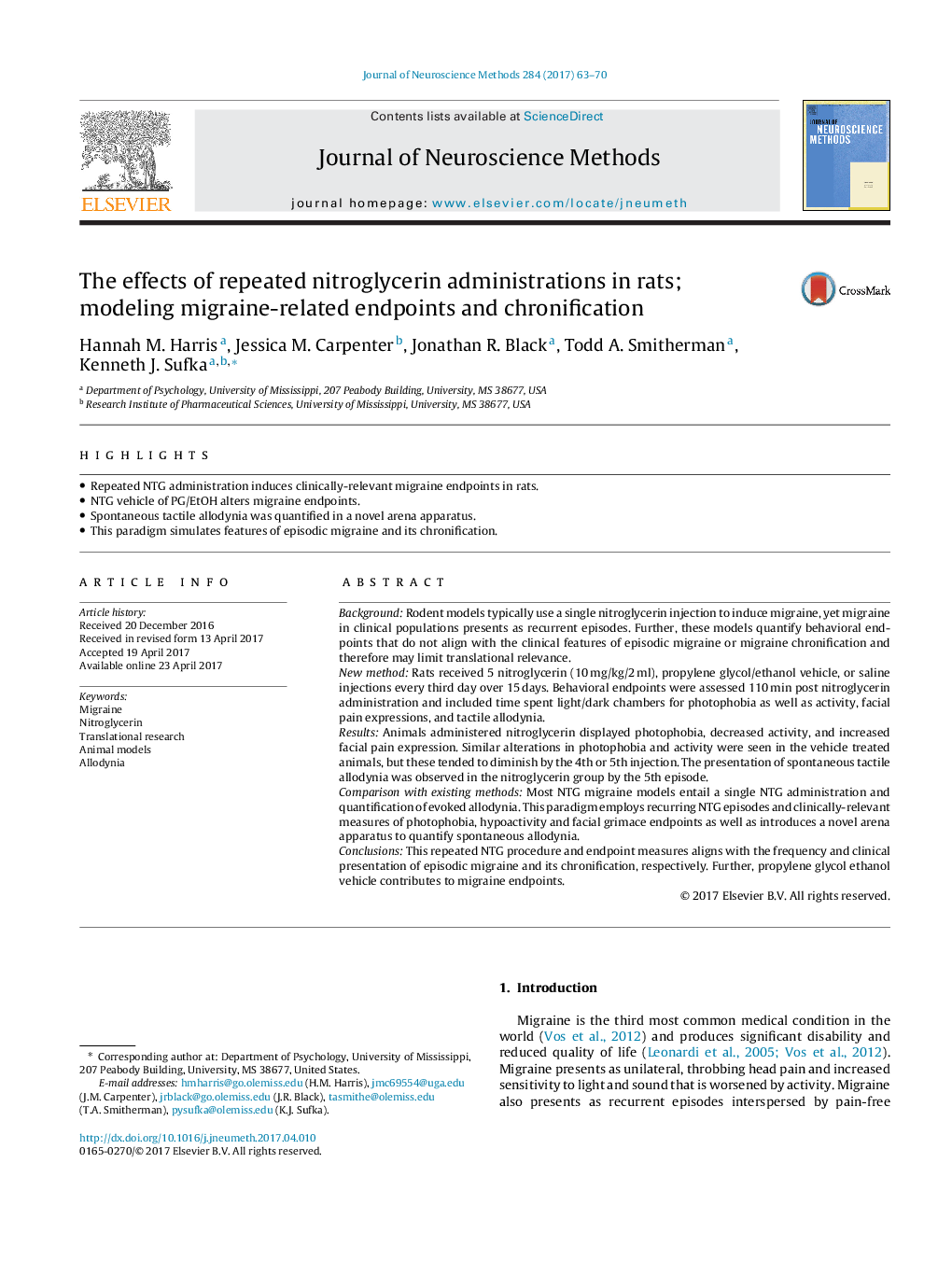| Article ID | Journal | Published Year | Pages | File Type |
|---|---|---|---|---|
| 5737243 | Journal of Neuroscience Methods | 2017 | 8 Pages |
â¢Repeated NTG administration induces clinically-relevant migraine endpoints in rats.â¢NTG vehicle of PG/EtOH alters migraine endpoints.â¢Spontaneous tactile allodynia was quantified in a novel arena apparatus.â¢This paradigm simulates features of episodic migraine and its chronification.
BackgroundRodent models typically use a single nitroglycerin injection to induce migraine, yet migraine in clinical populations presents as recurrent episodes. Further, these models quantify behavioral endpoints that do not align with the clinical features of episodic migraine or migraine chronification and therefore may limit translational relevance.New methodRats received 5 nitroglycerin (10Â mg/kg/2Â ml), propylene glycol/ethanol vehicle, or saline injections every third day over 15Â days. Behavioral endpoints were assessed 110Â min post nitroglycerin administration and included time spent light/dark chambers for photophobia as well as activity, facial pain expressions, and tactile allodynia.ResultsAnimals administered nitroglycerin displayed photophobia, decreased activity, and increased facial pain expression. Similar alterations in photophobia and activity were seen in the vehicle treated animals, but these tended to diminish by the 4th or 5th injection. The presentation of spontaneous tactile allodynia was observed in the nitroglycerin group by the 5th episode.Comparison with existing methodsMost NTG migraine models entail a single NTG administration and quantification of evoked allodynia. This paradigm employs recurring NTG episodes and clinically-relevant measures of photophobia, hypoactivity and facial grimace endpoints as well as introduces a novel arena apparatus to quantify spontaneous allodynia.ConclusionsThis repeated NTG procedure and endpoint measures aligns with the frequency and clinical presentation of episodic migraine and its chronification, respectively. Further, propylene glycol ethanol vehicle contributes to migraine endpoints.
